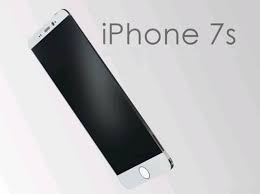Apple won't release its next-generation iPhone until the fall of 2016, so there are still several months of development ahead. For the current time, Apple's flagship iPhones are the iPhone 6s and the iPhone 6s Plus, released to the public in September of 2015.
Though it will be several months before the new iPhone launches, rumors about the device started trickling out in January of 2016. We've already gleaned many details about the upcoming iPhone, giving us some information on what to expect when it launches.
Since the 3GS launched in 2009, Apple has used an alternating "S" naming formula to mark years where the iPhone does not receive a major redesign, saving its numbered upgrades for years where design changes are introduced. Releases have been as follows:
2007 - iPhone
2008 - iPhone 3G
2009 - iPhone 3GS
2010 - iPhone 4 (new design)
2011 - iPhone 4s
2012 - iPhone 5 (new design)
2013 - iPhone 5s
2014 - iPhone 6 and iPhone 6 Plus (new design)
2015 - iPhone 6s and iPhone 6s Plus
The next-generation iPhone is expected to be called the iPhone 7. 2015 marked an "S" iPhone upgrade year that introduced new features such as an improved camera and a better processor, but 2016 will bring an even-year upgrade that will include an all-new iPhone design in addition to new features.
Apple will continue releasing two versions of each iPhone, so we can expect to see an iPhone 7 and an iPhone 7 Plus in 2016. Apple is said to be planning to stick to the 4.7- and 5.5-inch screen sizes it first introduced with the iPhone 6 and 6 Plus.
Apple is said to be working on finalizing the iPhone 7's body so we don't know exactly what it will look like, but multiple rumors suggest it continues to use a design similar to the design of the iPhone 6s. It is said to have the same general shape, but it is thinner and may have a camera that protrudes less (though rumors currently disagree on this point). Antenna bands across the back of the device have been removed, but are expected to remain at the top, bottom, and sides of the iPhone.
Mockup of iPhone 7 case showing possible flush rear camera and no antenna bands across rear.
Apple is rumored to be aiming to make the iPhone 7 nearly as thin as the 6.1mm iPod touch, mainly through the removal of the 3.5mm headphone jack and the implementation of a thinner Lightning port. Eliminating the headphone jack will give Apple more internal space for other components, and Apple will also keep the device slim with the continued use of in-cell panels and TFT-LCD display technology. Apple may replace the headphone jack on the iPhone 7 with a second speaker for stereo audio.
With no headphone jack, wired headphones will connect to the iPhone 7 using its Lightning port and Bluetooth headphones will connect wirelessly. Apple is rumored to be working on Lightning-equipped EarPods to sell alongside the iPhone 7.
An image of a device said to be the iPhone 7 Plus has surfaced depicting a Smart Connector on the back of the shell, suggesting that is another potential feature, but it is not yet clear what it would be used for.
Internal specs for the iPhone 7 aren't yet known, but we can speculate Apple will continue on its path of introducing more powerful, efficient devices that grow thinner with each design iteration. The iPhone 7 and iPhone 7 Plus are expected to include next-generation A10 processors manufactured by TSMC.
There are rumored to be some distinguishing features between the iPhone 7 and the larger-screened iPhone 7 Plus. The iPhone 7 may ship with 2GB RAM, while the iPhone 7 Plus could include 3GB RAM, and there is said to be a different camera system that uses two cameras instead of one. The iPhone 7 will likely continue to use a standard single-lens camera as the dual lens camera is said to be exclusive to the 5.5-inch iPhone.
According to rumors, Apple may be planning to introduce two versions of the iPhone 7 Plus -- one with a single lens like the iPhone 7 and a second with a dual-lens camera system that offers DSLR-like image quality with 2-3x optical zoom and improved performance in low light conditions.
It features a design that's similar in shape to the iPhone 6s, but without rear antenna bands. It has a protruding, pill-shaped camera enclosure that includes two cameras inside, as is rumored for the larger-screened device, along with a round flash.
It also depicts a Smart Connector on the back of the iPhone, which is an unusual inclusion. There's a Smart Connector on the iPad Pro for connecting accessories, but it is unclear how a similar feature would be used on iPhones.

No comments:
Post a Comment